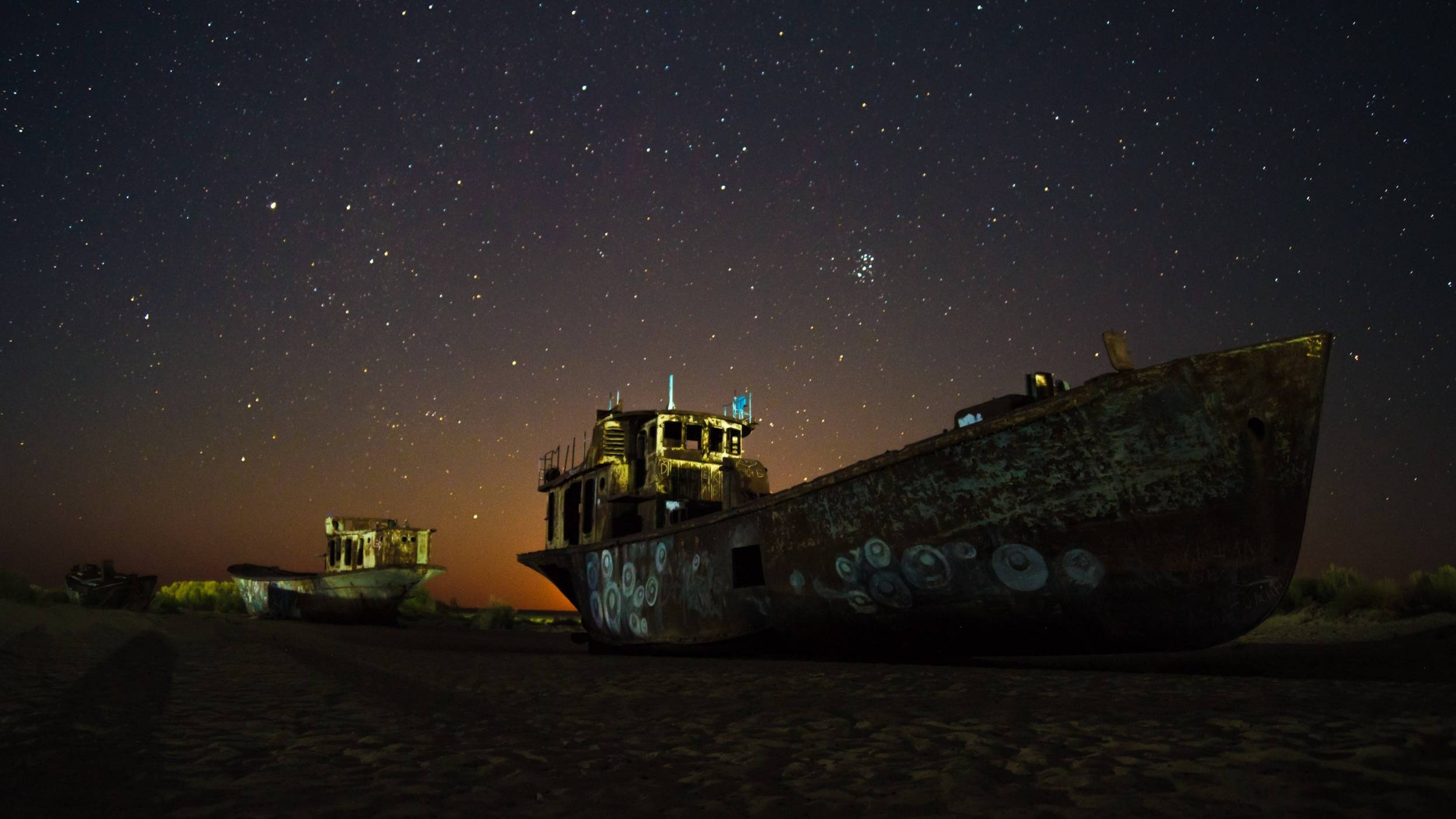
On November 5, 1933, by the decision of the All-Russian Central Executive Committee, the village of Moynaq was assigned to the category of workers' settlements.. At that time, Muynak was part of the Kara-Kalpak ASSR, which, in turn, was part of the RSFSR.[2]. In the 1950s, Muynak received the status of a township.. In 1963, Moynac was granted city status.. It was one of the two cities on the coast of the Aral Sea along with Aral.. In the 1960s, the construction of the Amudarya's irrigation canals for irrigation of cotton began.. As a result, the Aral Sea's water supply decreased, and it began to shrink.. Until the mid-1980s, Muynak was a thriving fishing port on the southern coast of the Aral Sea.. In the city worked the Moynack fish canning plant, which was a city-forming enterprise and one of the largest fish canning enterprises of the former USSR. In the 1980s, in order not to close the fish canning plant in Moynac, frozen fish was brought here from Russia.. In the early 1990s, the fish canning plant was closed, unemployment began, residents began to leave their homes and move to Nukus, Kungrad and other cities.. Participated in the repetition of dust-salt storms, diseases of the population (diseases of the gastrointestinal tract, eye and skin). Groundwater levels have dropped, and desertification has accelerated.. The remaining springs became unfit for drinking due to the high pesticide content that was washed from the cotton fields in Amudarya.. The port has become a "ship graveyard". Due to the lowering of the water level in the Aral Sea today the coastline is 100 km from Moynac. The exposed bottom of a former lake, once called the sea for its magnificent beaches, abundant fish, and sheer size, has now become a desert.. Local residents call the desert Aralkum (analogous to the desert of Kyzylkum). Ships used to sail the sea. They are now abandoned and rusting in the "ship cemetery" in the former port of Muynak.[3]. As of 2011, from Moynac about 100 km to the western (deep) part of the South Aral Sea and about 180 km to the eastern (shallow water) part. The eastern part of the sea (due to the comparatively small depths) most quickly retreated from Muynak: in the mid-1990s it was at a distance of 45 km from the city, and in the early 2000s - at a distance of 100 km.. In 2008, Petro Alliance conducted exploration work for oil and gas on the former bottom of the Aral Sea, the result was positive.. The gas here is high quality, with minimal hydrogen sulfide.. On January 20-21 , 2017 the construction of the Kungrad-Muynak water supply network began. Construction of the 26.6 billion soums and 101 km long structure was carried out for 5 months. More than 25,000 people have been provided with clean drinking water. Moynack-Uchsai water pipeline to be extended by 1.51 km. Since the mid-2000s, the city has attracted tourists from all over the world.. The flow of tourists to Moynack has increased dramatically since 2016. Nowadays Muynak is an important transshipment point for tourists and scientists who are going to visit and study the remote areas of the dry parts of the Aral Sea.. It is also through Muynak that tourists on off-road vehicles come to the shores of the Aral Sea, which is several tens of kilometers away from Muynak to the north and northwest..
